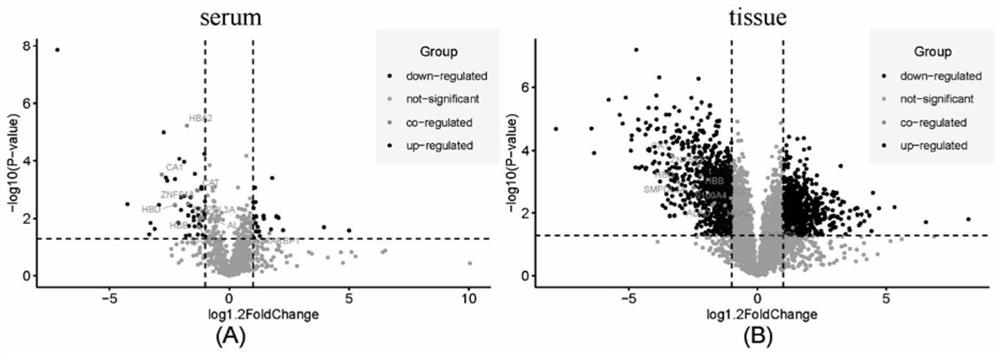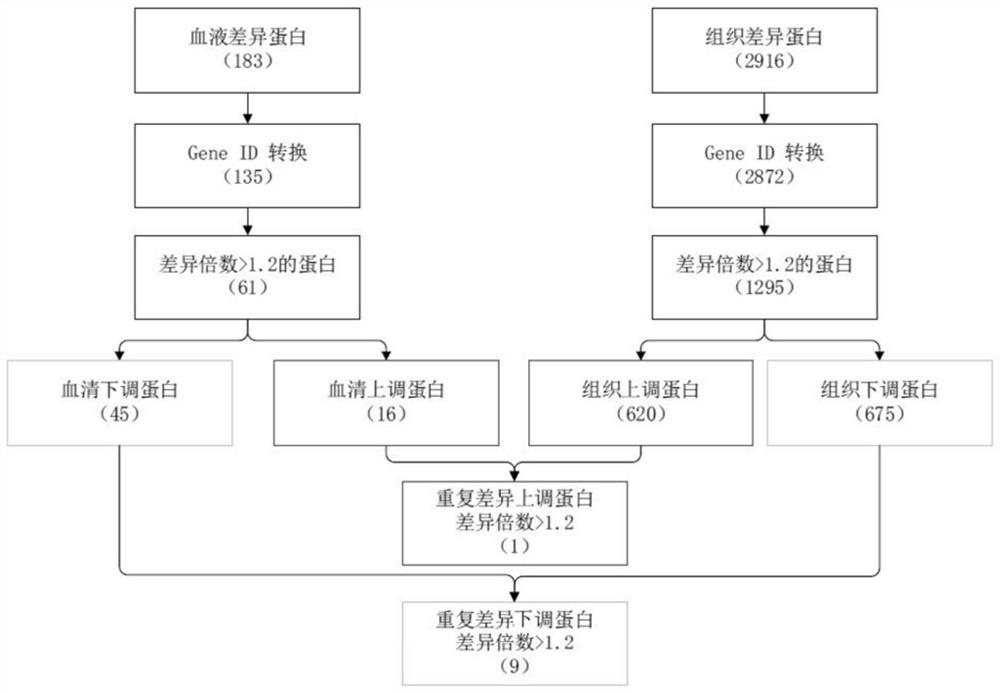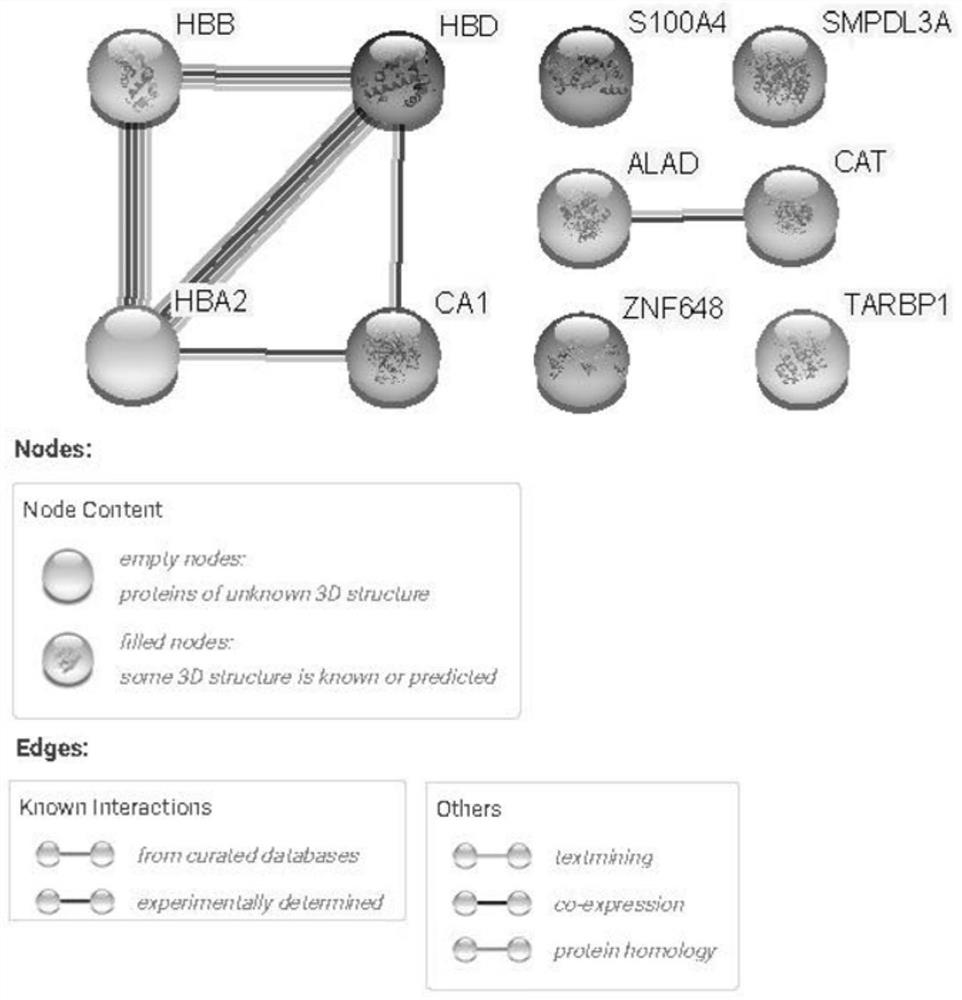Application of carbonic anhydrase 1 and acid sphingomyelinase-like phosphodiesterase 3a as molecular markers in colorectal cancer diagnosis
An enzyme-like phosphodiesterase and carbonic anhydrase technology, applied in the field of medicine, can solve the problems of unspecified colorectal cancer screening and diagnosis methods, and achieve the effect of specific standard method system and accurate marker selection.
- Summary
- Abstract
- Description
- Claims
- Application Information
AI Technical Summary
Problems solved by technology
Method used
Image
Examples
Embodiment 1
[0030] Example 1 Screening of Candidate Biomarkers by Colorectal Cancer Tissue and Serum Proteomics Experiment
[0031] 1. Sample collection:
[0032] 1) Colorectal cancer case population: patients diagnosed with colorectal cancer by pathology in the Third Affiliated Hospital of Harbin Medical University in 2016, excluding neuroendocrine cancer, malignant melanoma, non-Hodgkin's lymphoma, gastrointestinal stromal tumor , Lynch syndrome colorectal cancer patients, only newly diagnosed pathologically confirmed cases are reserved.
[0033] Collection of tissue samples: 5 colorectal cancer tissues and paired distal normal mucosal tissue samples were collected during the operation, immediately stored in liquid nitrogen, and transferred to a -80°C refrigerator for storage until detection and analysis.
[0034] Serum sample collection: preoperative fasting venous blood sample 5-10ml, a total of 15 cases. After collection, let it stand for 1-2 hours, centrifuge at 3000 rpm for 10 mi...
Embodiment 2
[0055] Example 2 Population verification of diagnostic protein markers for colorectal cancer
[0056] Two proteins CA1 and SMPDL3A specific to colorectal cancer were validated in low-throughput in patients with colorectal cancer and healthy people, their protein expression in serum of cases and controls was detected, and their effects on colorectal cancer were evaluated. diagnostic value.
[0057] 1. Sample collection
[0058] In this study, 108 patients with colorectal cancer pathologically diagnosed in the Third Affiliated Hospital of Harbin Medical University in 2016 and 120 orthopedic patients in the Second Affiliated Hospital of Harbin Medical University in 2017 were included in the control population without cancer. Female participants accounted for 32.4% and 48.4% in the case-control group, of which 53.7% and 36.7% were older than 60 years old, demographic information Table 2.
[0059] Collect 5-10ml of fasting venous blood samples. After collection, let it stand for...
PUM
 Login to View More
Login to View More Abstract
Description
Claims
Application Information
 Login to View More
Login to View More - R&D
- Intellectual Property
- Life Sciences
- Materials
- Tech Scout
- Unparalleled Data Quality
- Higher Quality Content
- 60% Fewer Hallucinations
Browse by: Latest US Patents, China's latest patents, Technical Efficacy Thesaurus, Application Domain, Technology Topic, Popular Technical Reports.
© 2025 PatSnap. All rights reserved.Legal|Privacy policy|Modern Slavery Act Transparency Statement|Sitemap|About US| Contact US: help@patsnap.com



